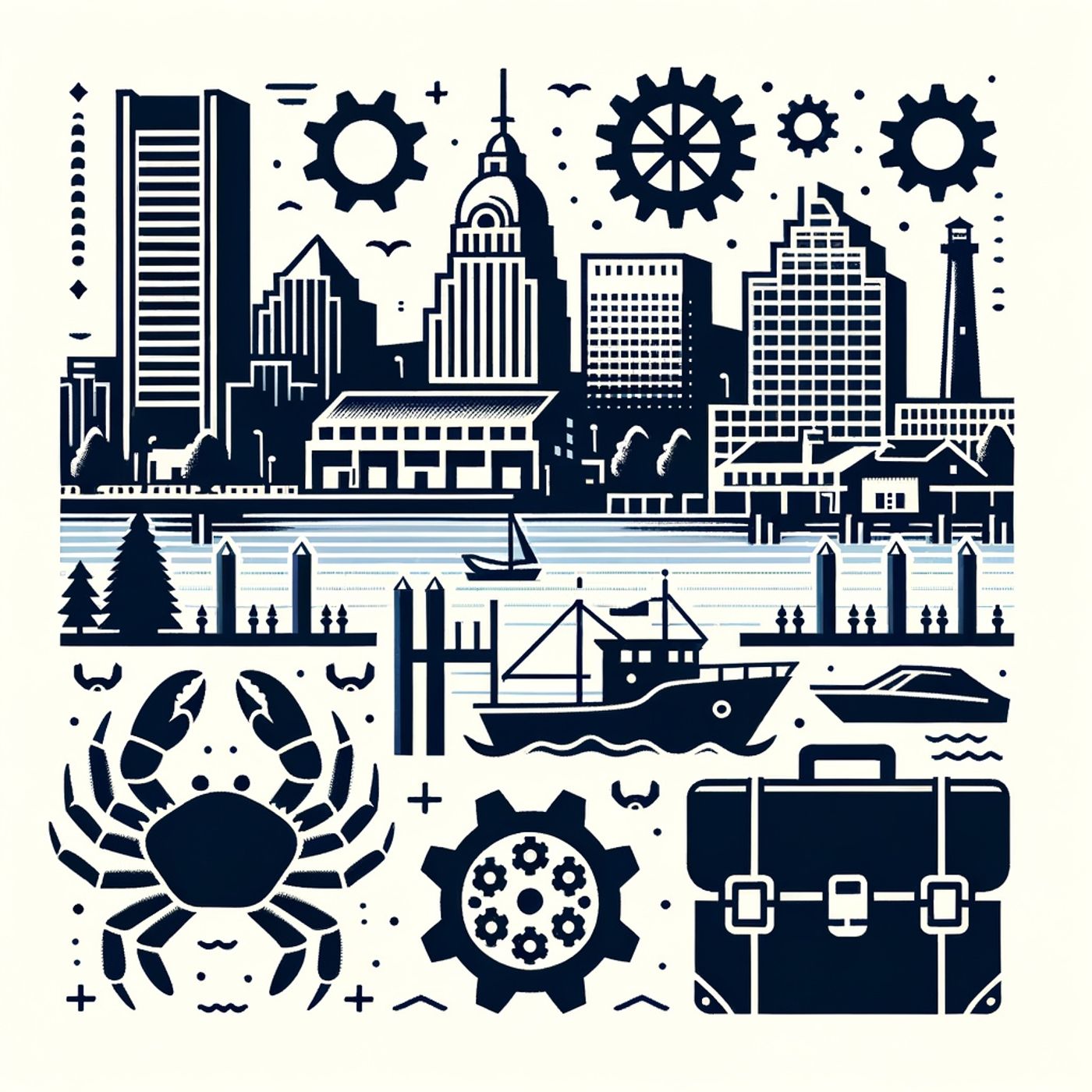Listen "Baltimore's Job Market Shifts: Resilience, Moderation, and Targeted Investments"
Episode Synopsis
Baltimore’s job market in late 2025 is defined by pockets of resilience, dynamic shifts, and ongoing government investment. The region’s employment landscape remains broad, with leading industries including health care, education, government, financial services, logistics, and technology. Several prominent employers such as Johns Hopkins Medicine, University of Maryland Medical System, Baltimore City Public Schools, and the state and federal governments continue to anchor the city’s workforce. U.S. Bureau of Labor Statistics data indicate an unemployment rate in Baltimore hovering around 4.1 percent this summer, a figure improved from last year but reflecting a job market that has cooled from its post-pandemic surge. Bank of America Institute analysis confirms that job hopping has sharply declined: fewer workers are switching employers and, for those who do, the median raise has dropped to just 7 percent—less than half the rate seen in 2022. This signals a power shift back toward employers, with pay growth flattening among both new hires and existing employees.Recent Maryland Economic Development Corporation updates highlight ongoing investment in industrial park development and infrastructure, with 42 industrial parks statewide having a positive spillover on the local labor market. Key growing sectors in Baltimore include life sciences, cybersecurity, port logistics, and green energy, aligning with Maryland’s targeted development strategies. Another recent trend is a focus on youth mentoring, job creation, and social services as part of crime reduction and economic stability, a strategy applauded by policy experts and credited with contributing to the city’s lowest crime rates in decades.Commuting patterns show the continued impact of remote and hybrid work, although many city employees and corporate staff have gradually returned to workplaces. Government initiatives like job training, investment incentives, and expanded workforce development remain essential, though gaps persist in matching skillsets to evolving industry needs. While pandemic-driven labor shortages have largely eased, some hospitality, construction, and skilled trade positions remain difficult to fill seasonally.Baltimore’s job market evolution is marked by stabilization rather than explosive growth, with government, education, and health care retaining the largest employment share. Key findings include a city adapting successfully to post-pandemic realities, a moderating labor market with tightening opportunities, major investments in workforce infrastructure, and a steady pivot toward high-growth and knowledge-based sectors. Current job opportunities include a Senior Designer with the Maryland Family and Medical Leave Insurance program in Baltimore City, a Facilities Management Technician with the Maryland Department of General Services, and a Sr. Auto Appraiser position at USAA.Thanks for tuning in and remember to subscribe. This has been a quiet please production, for more check out quiet please dot ai.For more http://www.quietplease.aiGet the best deals https://amzn.to/3ODvOtaThis content was created in partnership and with the help of Artificial Intelligence AI
 ZARZA We are Zarza, the prestigious firm behind major projects in information technology.
ZARZA We are Zarza, the prestigious firm behind major projects in information technology.
